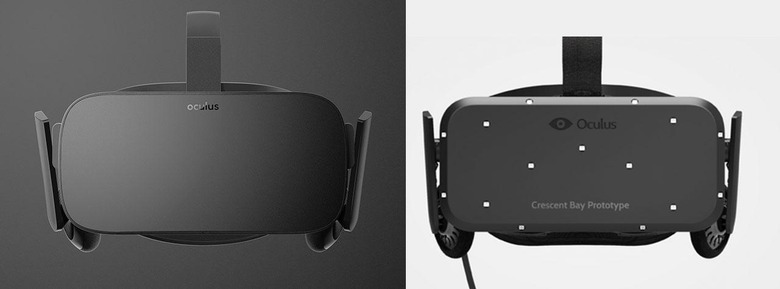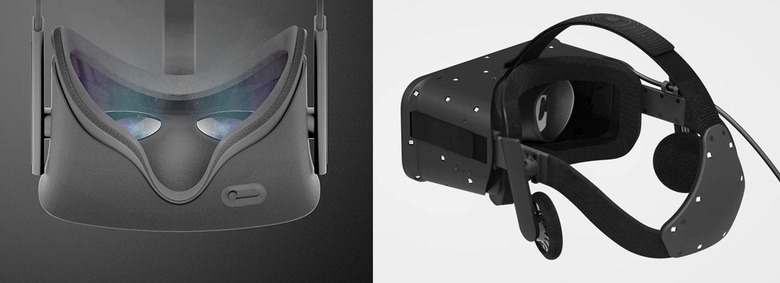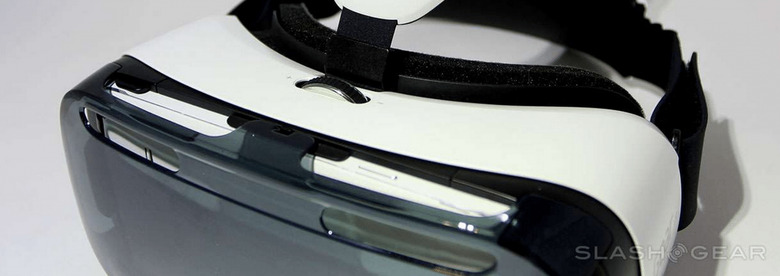Oculus Rift Consumer Version Vs Crescent Bay: Basic VR Details
Before we dive in on the Consumer Release of Oculus Rift as it compares to the most recent version of Crescent Bay, be forewarned. Not a whole lot is known to the public at this point. What we're going on here is a mix of what we've been told by Oculus and what's been made obvious in comments from Oculus leaders like John Carmack over the past few weeks and months. That said, let's have a look. This is Oculus Rift as it's set to appear in early 2016, with pre-orders starting near the end of 2015.
Earlier today it was revealed by Oculus that they'd be selling a consumer version of Oculus Rift in early 2016. Pre-order start in 2015 (at some point or another), and the headset they'll be selling will look very similar, if not identical, to the set you're seeing here.
On the left is the new consumer headset. On the right is Crescent Bay.

Above you're seeing two very similar views of the new headset and the most recent developer version. This most recent version goes by the name Crescent Bay. You can see our several looks at Crescent Bay in the following links:
• Hands-on with CryEngine: Back to Dinosaur Island
• Hands-on with Unreal Engine 4: Thief in the Shadows (The Hobbit)
You'll notice a newly simplified look for the consumer edition.
You'll also notice the lack of a cord.
While we want to be especially hopeful about the possibility of a wireless VR headset here, it's far more likely that they're implying you'll be able to use your own cord, or that one won't necessarily come in the box. HDMI remains the most likely connector here.
John Carmack has suggested that there will be no VR HMD (Head-Mounted Display) in the year 2016 with more than 1440 resolution. He suggests in the following video that we'll be seeing 1440 resolution this year through next year.
Above is John Carmack speaking at the University of Texas about Virtual Reality on the 28th of April, 2015. These comments are about as close to the day as we're going to get.
You'll also notice headphones. This means the CB developer model's headphones are pretty much what you're going to get with the CV1 (Consumer Version 1). You'll also hear Carmack mention "CV1" several times in the video above.
Below you'll see the CV1 model again, this time from the underside, as well as the Crescent Bay model to the right. Here you'll notice a slider under the CV1's faceplate.

This slider could be for visual adjustment, much like the wheel at the top of the Samsung Gear VR is for physical visual adjustment. This physical movement would be for adjusting for IPD – Interpupillary distance.

While many people have very similar distances between their two eyes, tiny adjustments can be very, very helpful in a precise bit of engineering like this.
This first Consumer Version of the Oculus Rift VR headset "builds on the presence, immersion, and comfort of the Crescent Bay prototype," suggests Oculus, "with an improved tracking system that supports both seated and standing experiences, as well as a highly refined industrial design, and updated ergonomics for a more natural fit."
Stay tuned to SlashGear's Virtual Reality tag portal as well as our Gaming hub for more information as we deliver it over the next few weeks. Lots more in the pipeline!
